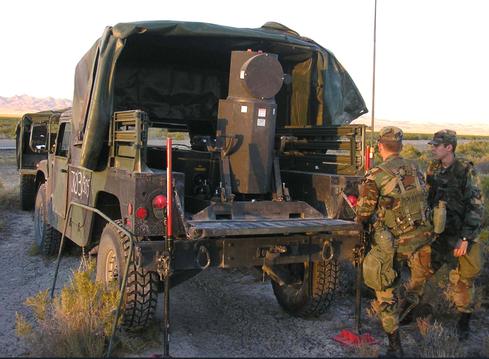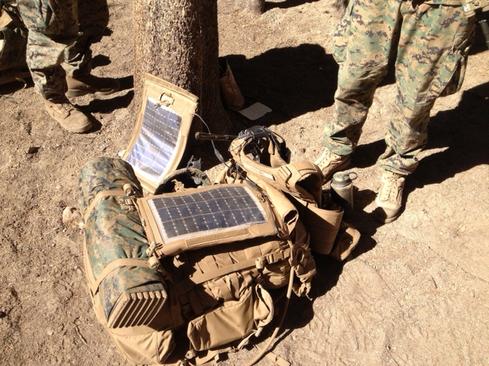Defense Department would use the technology to detect biological and chemical agents during operations.


Solar-Powered Wearable Tech Lightens Marines' Loads
Solar-Powered Wearable Tech Lightens Marines' Loads (Click image for larger view and slideshow.)
The Defense Advanced Research Projects Agency (DARPA) has set out to develop a new class of high-power ultraviolet lasers that are more than 300 times smaller and 10 times more efficient than currently available lasers.
DARPA wants the new technology in order to detect biological and chemical agents during remote, manned, and unmanned Department of Defense (DOD) operations. The agency said it would consider different technical approaches, as long as they operate within deep UV -- or a 220 to 240 nanometer wavelength -- and produce greater than 1 watt of power. The program is called Laser UV Sources for Tactical Efficient Raman (LUSTER).
The new technology would make use of Raman spectroscopy, which uses lasers to measure molecular vibrations to quickly and accurately identify unknown substances. UV lasers have the optimal wavelength for Raman spectroscopy at stand-off distances. Detection systems used in the field today are extremely large and heavy, often requiring trucks to move them.
One example is the Joint Biological Stand-Off Detection System (JBSDS), which can detect aerosol clouds at a distance. The Air Force employs JBSDS in semi-fixed locations, while the Army uses it in stationary mode on multipurpose wheeled vehicles.
The LUSTER program hopes to produce capabilities similar to JBSDS, but compact and light enough for a person to carry. The technology could be integrated into current detection systems to save on size, weight, and power consumption, or it can be used create original systems that are smaller and more sensitive, according to DARPA. It would also cost significantly less.
[How can you be sure your electronics are genuine? Read: DARPA Targets Counterfeit Electronics.]
"In addition to detecting chemical and biological agents in the field -- or at home to protect against mass terror attacks -- UV lasers have many other uses," DARPA program manager Dan Green said in a statement. "The new class of UV lasers envisioned from the LUSTER program is expected to impact a broad range of applications such as point-of-need medical diagnostics, advanced manufacturing, and compact atomic clocks."
DARPA regularly introduces new programs that focus on developing breakthrough technologies for national security. The agency, however, has experienced delays with some of its projects due to budget cuts in recent years. Between fiscal years 2009 and 2013, DARPA's budget declined by 20%, including the sequestration reduction in fiscal year 2013, DARPA director Arati Prabhakar said in a statement.
For fiscal year 2015, President Obama has requested a budget of $2.915 billion for DARPA -- $136 million above the $2.779 billion budget for 2014. The funds would allow DARPA to continue making investments in programs like LUSTER, to pursue new ideas, and to "restore some of the reductions in the agency's budget from prior years," said Prabhakar. She added, "it also would allow DARPA to restore funding for its basic research portfolio so that we can continue to create new technologies in support of future capabilities."
Too many companies treat digital and mobile strategies as pet projects. Here are four ideas to shake up your company. Also in the Digital Disruption issue of InformationWeek: Six enduring truths about selecting enterprise software. (Free registration required.)
About the Author(s)
You May Also Like







